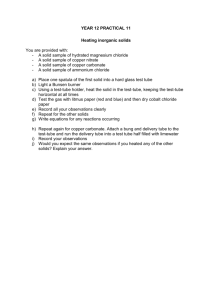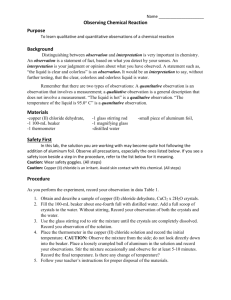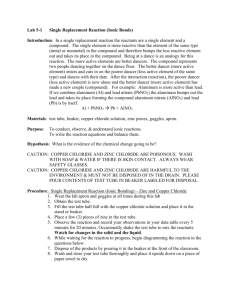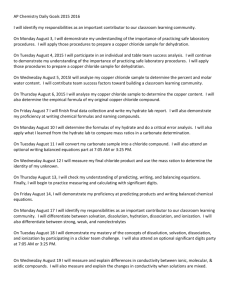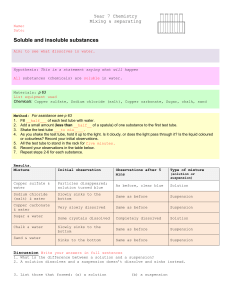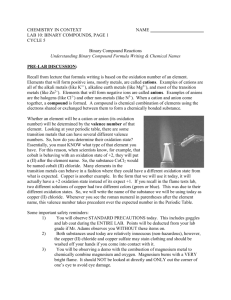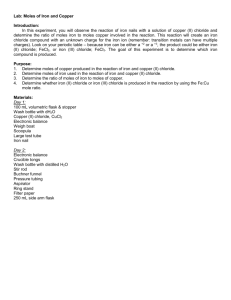Copper Chloride lab template
advertisement
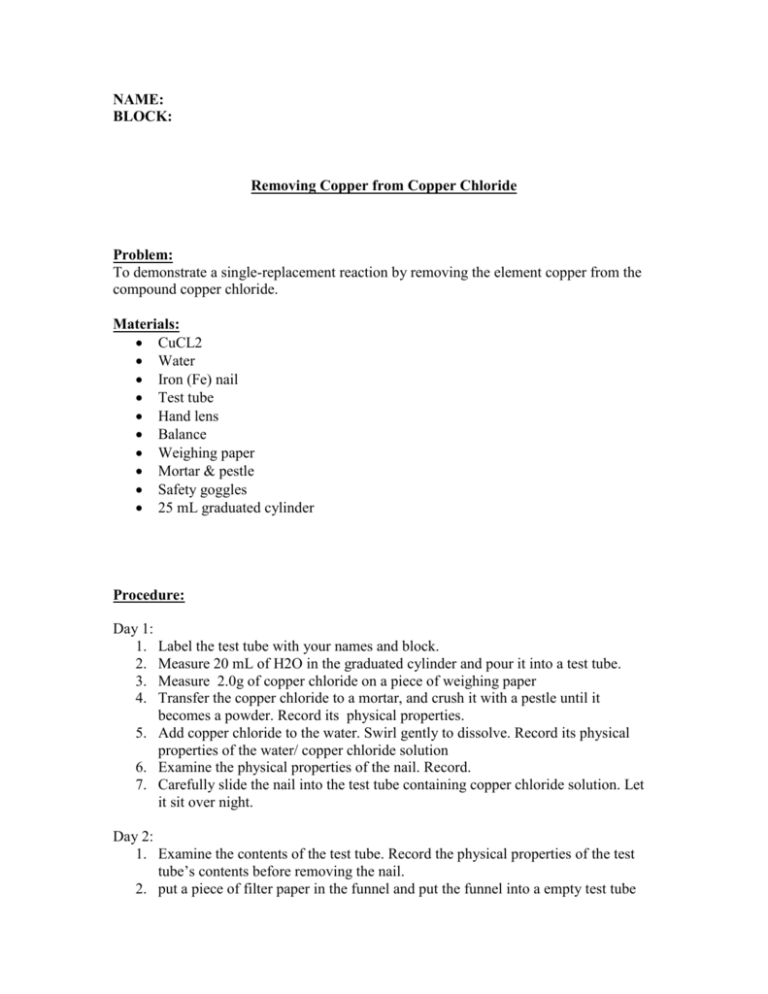
NAME: BLOCK: Removing Copper from Copper Chloride Problem: To demonstrate a single-replacement reaction by removing the element copper from the compound copper chloride. Materials: CuCL2 Water Iron (Fe) nail Test tube Hand lens Balance Weighing paper Mortar & pestle Safety goggles 25 mL graduated cylinder Procedure: Day 1: 1. 2. 3. 4. Label the test tube with your names and block. Measure 20 mL of H2O in the graduated cylinder and pour it into a test tube. Measure 2.0g of copper chloride on a piece of weighing paper Transfer the copper chloride to a mortar, and crush it with a pestle until it becomes a powder. Record its physical properties. 5. Add copper chloride to the water. Swirl gently to dissolve. Record its physical properties of the water/ copper chloride solution 6. Examine the physical properties of the nail. Record. 7. Carefully slide the nail into the test tube containing copper chloride solution. Let it sit over night. Day 2: 1. Examine the contents of the test tube. Record the physical properties of the test tube’s contents before removing the nail. 2. put a piece of filter paper in the funnel and put the funnel into a empty test tube 3. carefully pour the contents of the test tube into the filter paper. [The liquid that passes through the filter paper is called the filtrate. The material that does not pass through the filter paper is called the residue.] Data/Observations/Calculations/Tables: Day 1 Observations: Copper Chloride powder Copper Chloride solution Iron (Fe) nail Day 2 Observations: Appearance of contents of test tube Nail Solution (filtrate) Product (residue) Conclusion Questions: 1. Can the element copper be separated from the element chlorine in the compound copper chloride (CuCl2)? If so explain how. 2. Explain what the red deposit (residue) in the filter paper is. 3. Explain, using data from this lab, whether or not this was a physcial or chemical change, or both. How do you know? 4. Explain, using data from this lab, how this reaction is a single replacment reaction. Use the reactants and products to support your answer. BALANCED EQUATION: 5. Reflection: may use personalization; reflect on what it helped you see or understand; suggest ways to improve lab
